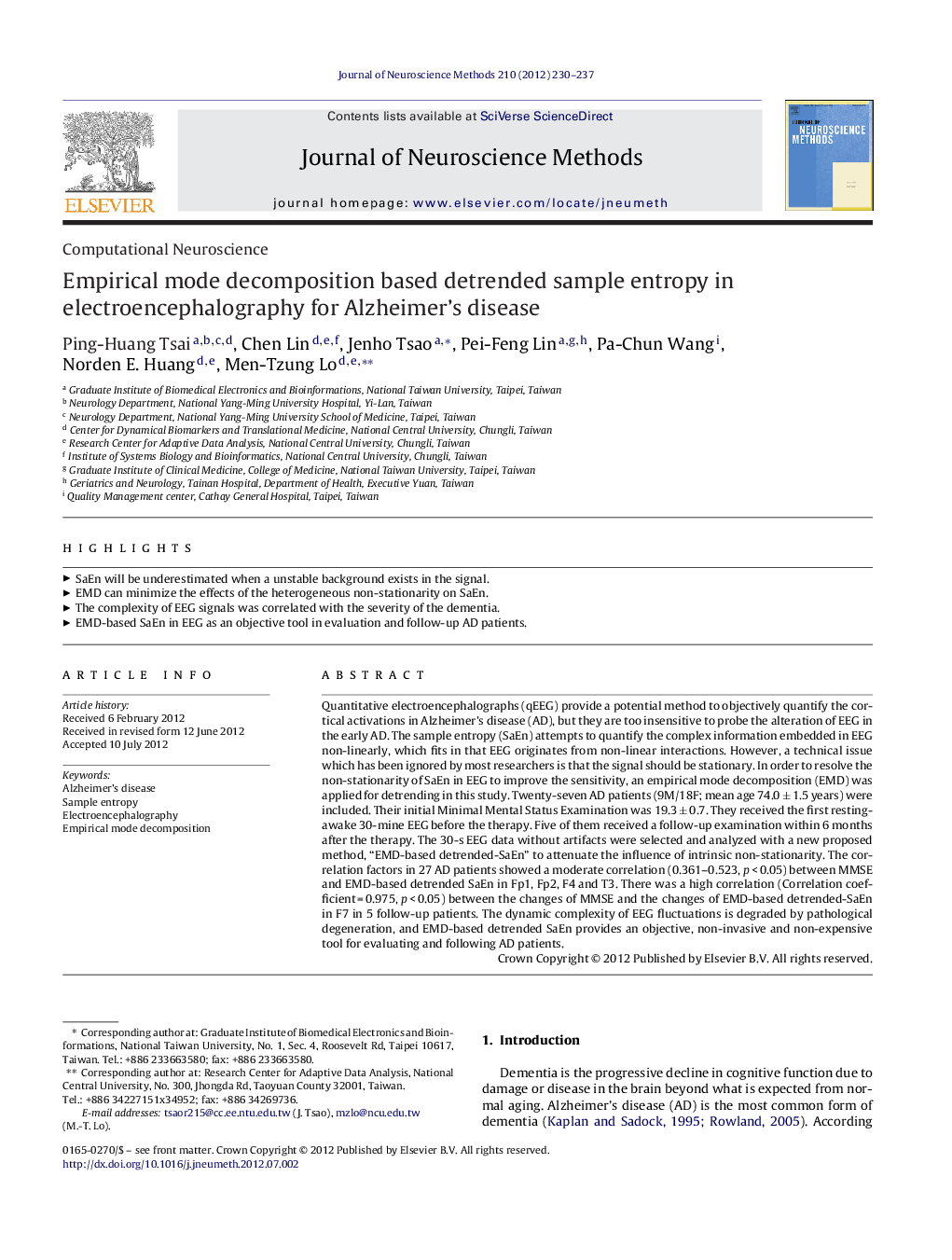| Article ID | Journal | Published Year | Pages | File Type |
|---|---|---|---|---|
| 6269574 | Journal of Neuroscience Methods | 2012 | 8 Pages |
Quantitative electroencephalographs (qEEG) provide a potential method to objectively quantify the cortical activations in Alzheimer's disease (AD), but they are too insensitive to probe the alteration of EEG in the early AD. The sample entropy (SaEn) attempts to quantify the complex information embedded in EEG non-linearly, which fits in that EEG originates from non-linear interactions. However, a technical issue which has been ignored by most researchers is that the signal should be stationary. In order to resolve the non-stationarity of SaEn in EEG to improve the sensitivity, an empirical mode decomposition (EMD) was applied for detrending in this study. Twenty-seven AD patients (9M/18F; mean age 74.0 ± 1.5 years) were included. Their initial Minimal Mental Status Examination was 19.3 ± 0.7. They received the first resting-awake 30-mine EEG before the therapy. Five of them received a follow-up examination within 6 months after the therapy. The 30-s EEG data without artifacts were selected and analyzed with a new proposed method, “EMD-based detrended-SaEn” to attenuate the influence of intrinsic non-stationarity. The correlation factors in 27 AD patients showed a moderate correlation (0.361-0.523, p < 0.05) between MMSE and EMD-based detrended SaEn in Fp1, Fp2, F4 and T3. There was a high correlation (Correlation coefficient = 0.975, p < 0.05) between the changes of MMSE and the changes of EMD-based detrended-SaEn in F7 in 5 follow-up patients. The dynamic complexity of EEG fluctuations is degraded by pathological degeneration, and EMD-based detrended SaEn provides an objective, non-invasive and non-expensive tool for evaluating and following AD patients.
⺠SaEn will be underestimated when a unstable background exists in the signal. ⺠EMD can minimize the effects of the heterogeneous non-stationarity on SaEn. ⺠The complexity of EEG signals was correlated with the severity of the dementia. ⺠EMD-based SaEn in EEG as an objective tool in evaluation and follow-up AD patients.
